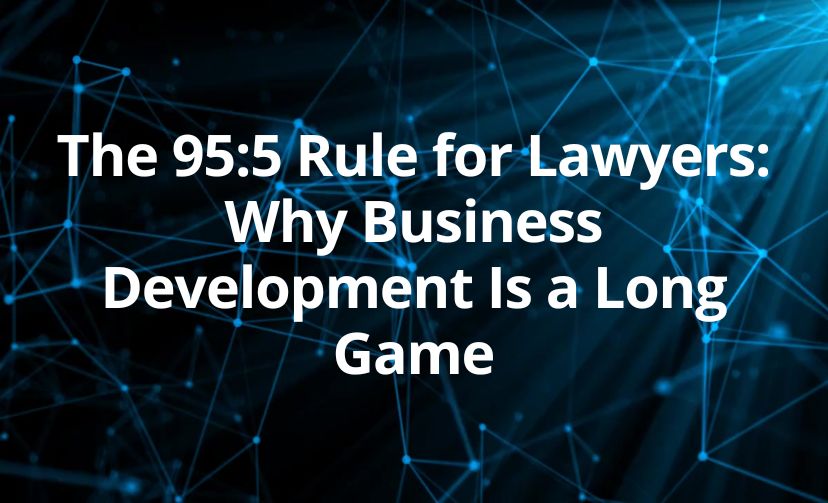Here’s a scenario every lawyer has lived through: You meet someone at a conference, a client meeting or a charity board event. You hit it off. You follow up. Maybe you grab coffee together. And then … crickets. No matter how promising the connection seemed, no work immediately materialized.
This is the hard truth of business development: Most of the people you meet won’t need you right now. That doesn’t mean the relationship has no value. In fact, it means the opposite.
The 95:5 Rule and Legal Services
In 2021, Professor John Dawes of the Ehrenberg-Bass Institute introduced what’s now known as the 95:5 Rule. His research showed that in B2B markets, only about 5% of potential buyers are “in market” at any given time. The remaining 95% aren’t looking for help today. But they will be, eventually.
This insight has major implications for business development. It means that your outreach, your networking, your thought leadership — it’s mostly hitting people who aren’t ready to hire you. Not because you’re doing it wrong. It’s simply because that’s how the market works.
Rather than trying to drive immediate action, the goal is to make sure you’re remembered when the 95% become the 5% (that is, someone now has a need). That requires a shift — from transactional thinking to long-term relationship building.
Why Being Top-of-Mind Matters
When someone finally does enter the market — whether they’re facing bet-the-company litigation, closing an acquisition, or are just fed up with their current outside counsel — they probably won’t run an RFP process. Instead, they’ll think: Who do I trust with this? And if you’ve done the work of staying visible, being useful, building trust, and showing up consistently, your name has a good shot at being the answer.
That’s what Dawes and others call “mental availability”: the probability that a brand (or in our case, a lawyer) comes to mind in a buying situation. You’re not trying to push buyers of legal services down a funnel — they won’t move until they’re ready. But you can catch them as they fall.
What This Looks Like in Practice
So, how do you do that? You stay present. You make regular, thoughtful touchpoints a habit — not just when you need something. You write and share ideas that resonate with your audience. You show up at the same events year after year. You invest in relationships before there’s any prospect of a return.
It doesn’t need to be overwhelming. One email every two months. A LinkedIn post every couple of weeks. A handwritten note here and there. An occasional phone call to catch up. Over time, those small deposits add up. They build trust. They build familiarity. And they position you to win when the moment is right.
The Takeaway
Most lawyers spend lots of time trying to be compelling in the moment — but not enough time trying to be remembered over time. Want to succeed in developing new business? Focus on building equity in relationships, knowing that only a small percentage will turn into business in the short term.
The work you’re doing today isn’t just about today. It’s about creating a positive association in the minds of prospective clients so that when the need arises, your name is on the short list.
Written by Jay Harrington, originally published on Attorney at Work.

